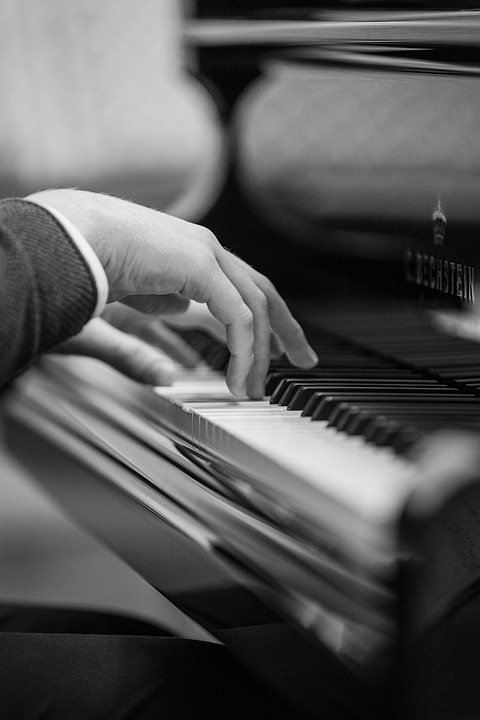A Critical Analysis of Interpretation in Chopin’s Piano Works
Frédéric Chopin is widely regarded as one of the greatest composers of the Romantic era, particularly known for his works for the piano. His compositions are complex and demand a high level of technical skill and interpretative nuance from the performer. In this article, we will explore the various elements of interpretation in Chopin’s piano works and how they contribute to the overall expressive quality of the music.
Understanding Chopin’s Musical Style
Chopin’s music is characterized by its lyrical melodies, rich harmonies, and virtuosic piano writing. His compositions often depict a range of emotions, from melancholy to joy, and require the performer to convey these emotions convincingly. Chopin’s use of rubato, a flexible approach to timing where the performer can momentarily speed up or slow down the tempo, is a defining feature of his music. This expressive freedom allows for a more emotive and personal interpretation of the music.
Interpreting Chopin’s Notation
Chopin’s notation can be quite sparse compared to later composers, such as Rachmaninoff or Debussy. This means that performers must rely heavily on their interpretation to bring out the nuances of the music. Chopin’s use of dynamics, articulation, and phrasing marks guide the performer in shaping the musical phrases and creating a sense of drama and tension in the music. It is crucial for the performer to pay close attention to these details and use them to convey the emotional arc of the piece.
Exploring Chopin’s Characteristic Forms
Chopin’s piano works encompass a wide range of forms, from nocturnes and ballades to études and polonaises. Each form presents its challenges in terms of interpretation, requiring a unique approach from the performer. For example, Chopin’s nocturnes are characterized by their lyrical and intimate quality, and the performer must strive to create a sense of intimacy and introspection in their interpretation. On the other hand, Chopin’s études are technically demanding pieces that require a high level of precision and virtuosity from the performer.
Utilizing Pedaling Techniques
Chopin was a master of the pedal, using it to create a rich and resonant sound in his piano works. Pedaling techniques such as legato pedaling, which involves using the sustain pedal to connect notes smoothly, and half-pedaling, where the pedal is depressed halfway down to create a subtle blurring of the sound, are essential for capturing the distinct sound world of Chopin’s music. The performer must experiment with different pedaling techniques to find the right balance of clarity and resonance in their interpretation.
Interpreting Chopin’s Expressive Markings
Chopin’s piano works are filled with expressive markings that guide the performer in shaping the emotional content of the music. From tempo markings such as “Largo” or “Allegro” to markings indicating dynamics, articulation, and phrasing, these markings provide valuable insight into Chopin’s intentions for the music. It is essential for the performer to interpret these markings thoughtfully and incorporate them into their performance to fully realize the expressive potential of the music.
Expressing Chopin’s National Identity
Chopin’s Polish heritage is a significant influence on his music, and many of his works are inspired by Polish folk music and dance forms. The performer must strive to capture the nationalistic spirit of Chopin’s music and convey a sense of Polish identity in their interpretation. By understanding the cultural context of Chopin’s music and incorporating elements of Polish folk music into their performance, the performer can create a more authentic and compelling interpretation of the music.
Conclusion
In conclusion, interpretation plays a vital role in bringing Chopin’s piano works to life and conveying the emotional depth and expressive qualities of the music. By understanding Chopin’s musical style, interpreting his notation, exploring the characteristic forms of his compositions, utilizing pedaling techniques, interpreting his expressive markings, and expressing his national identity, the performer can create a nuanced and emotionally resonant interpretation of Chopin’s music. Through careful study and thoughtful interpretation, the performer can unlock the beauty and complexity of Chopin’s piano works and create a compelling and engaging musical experience for the listener.


